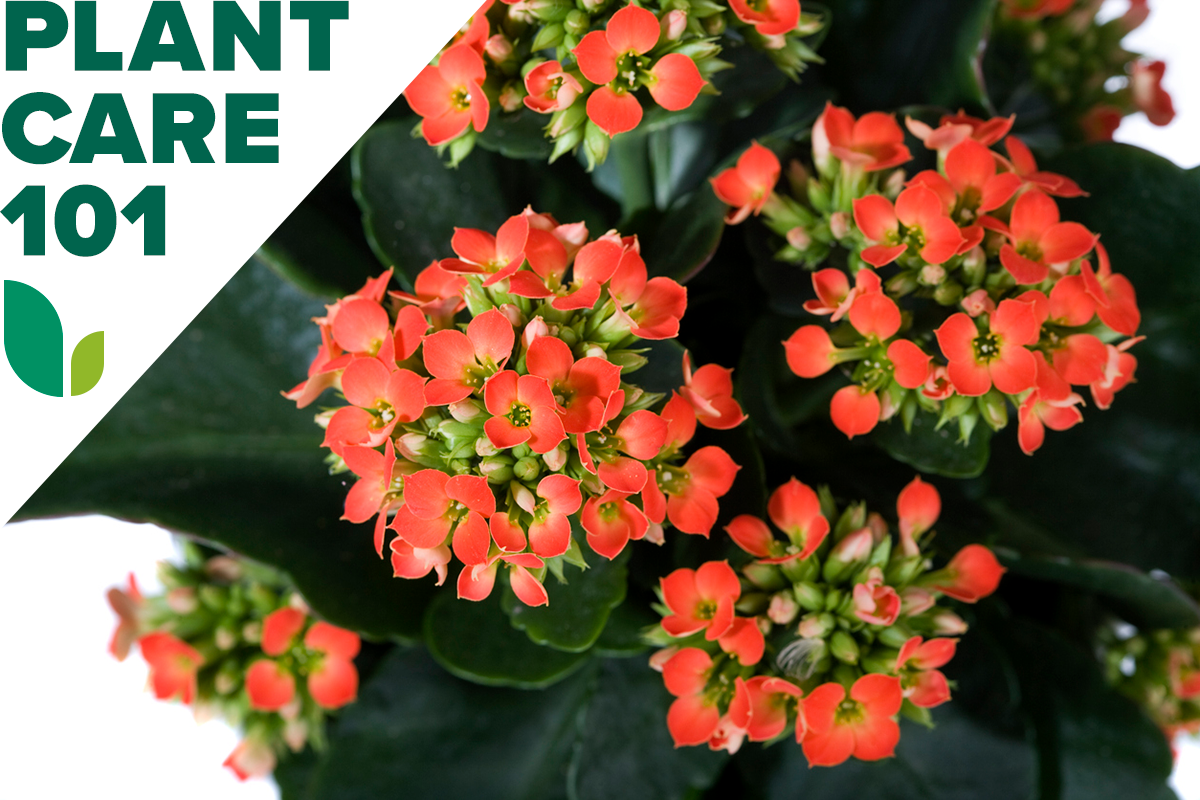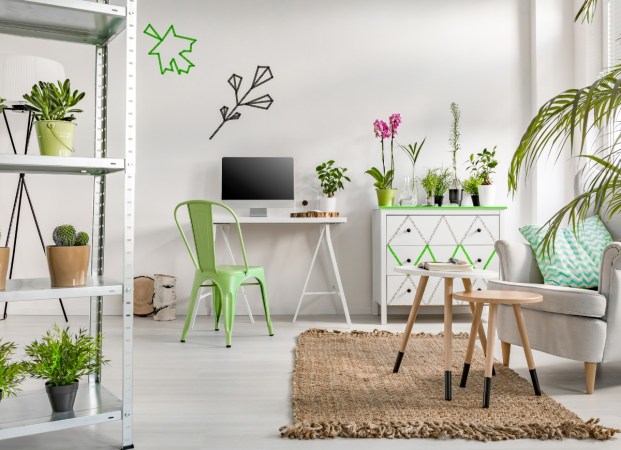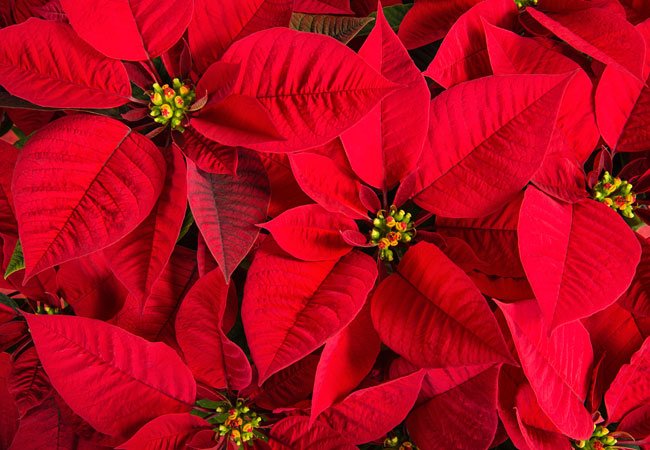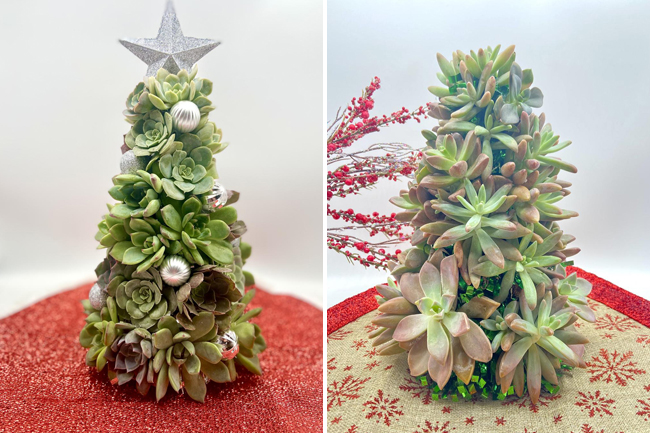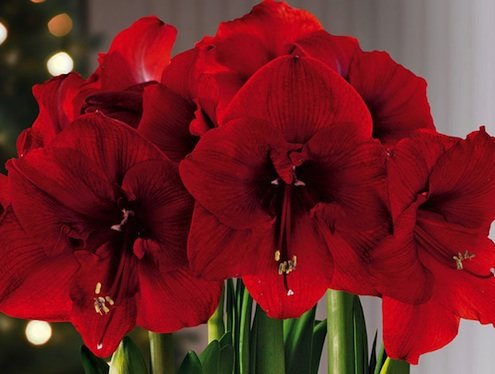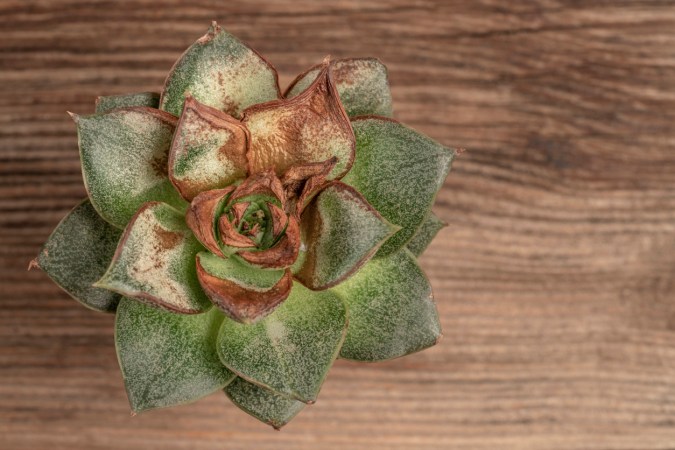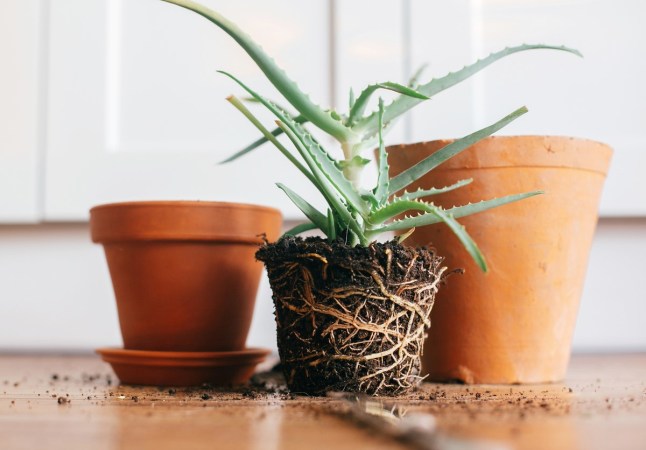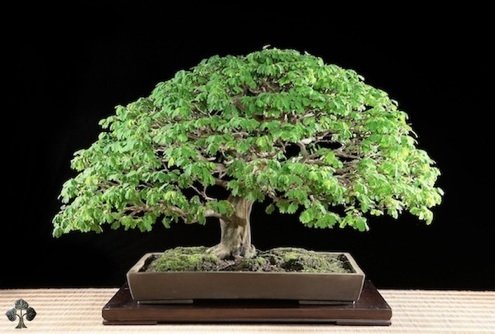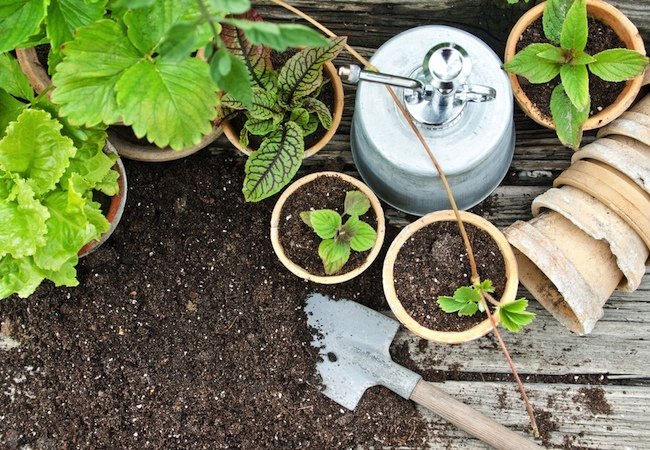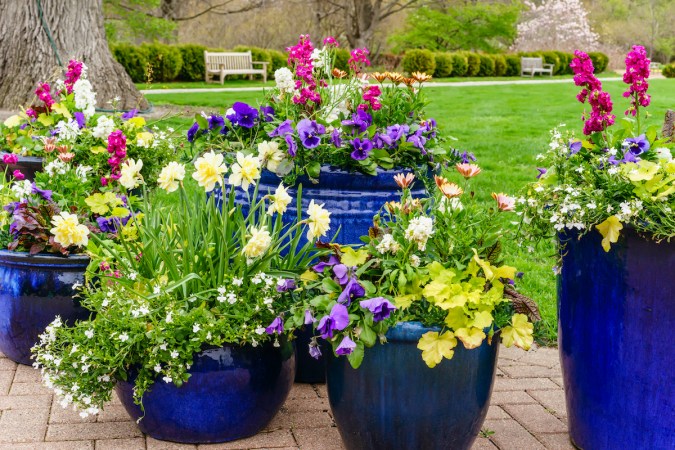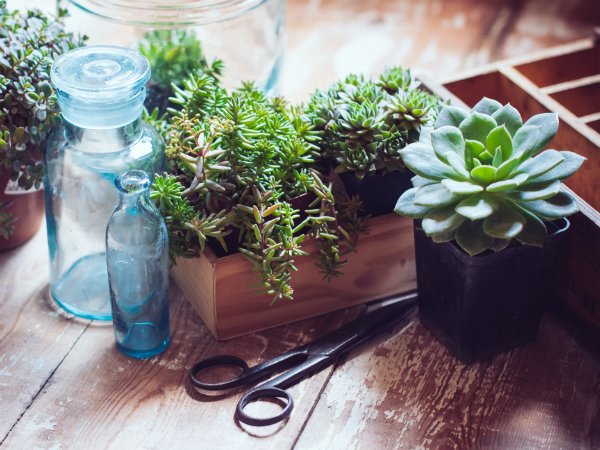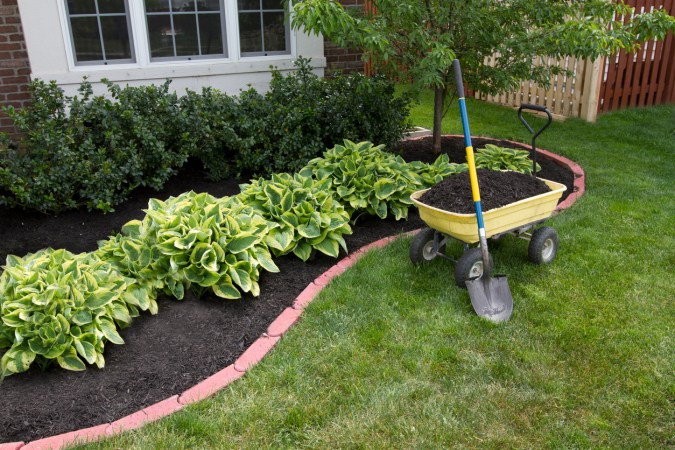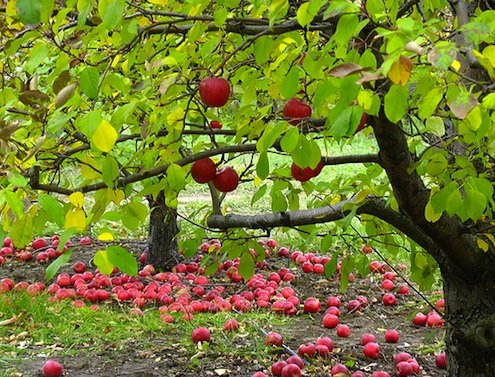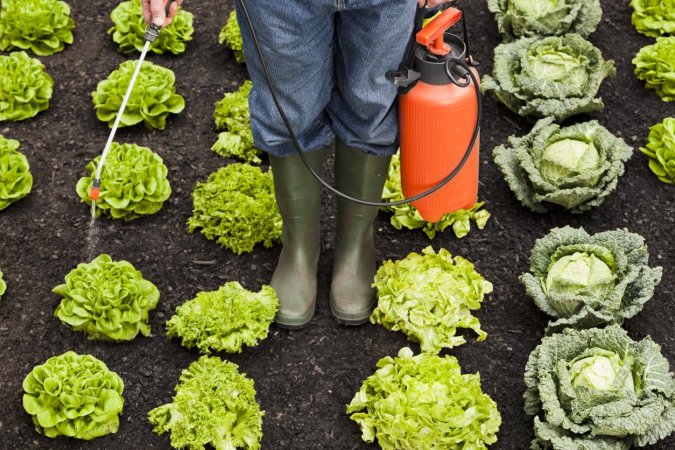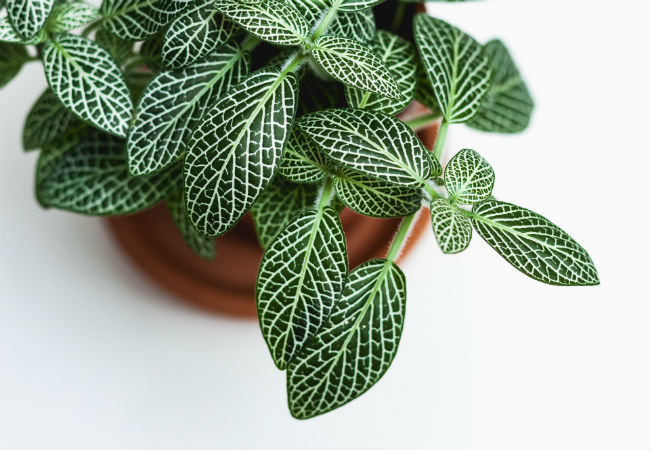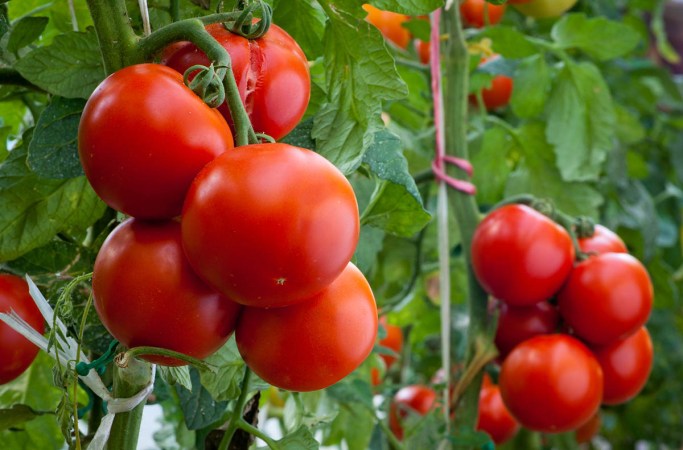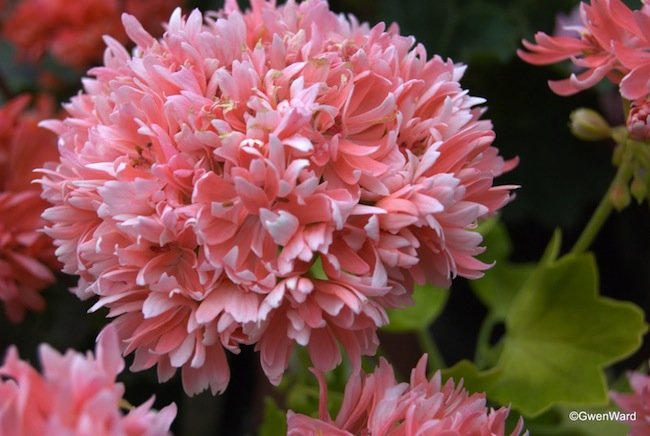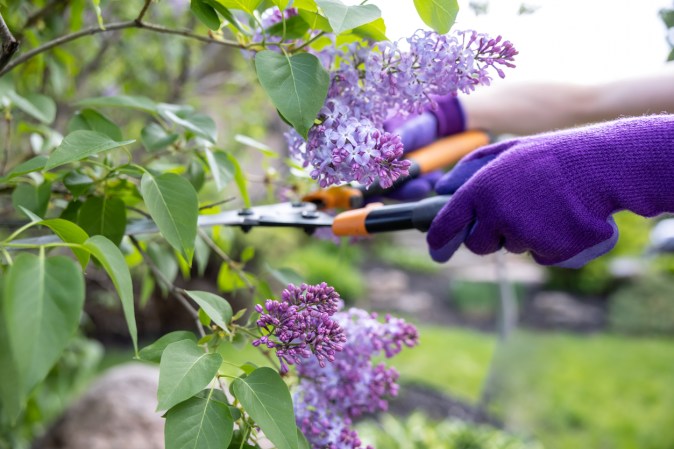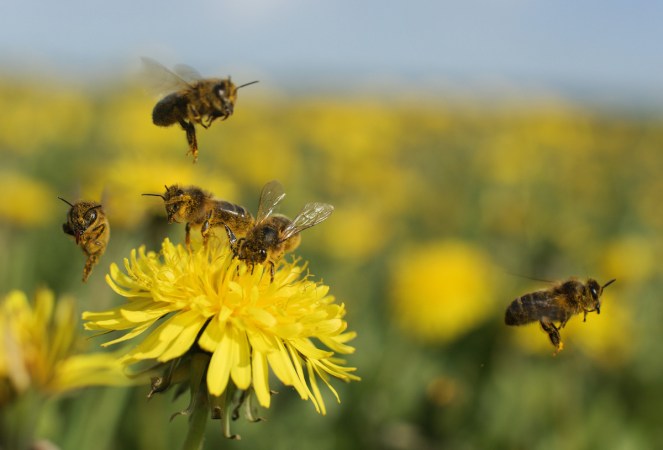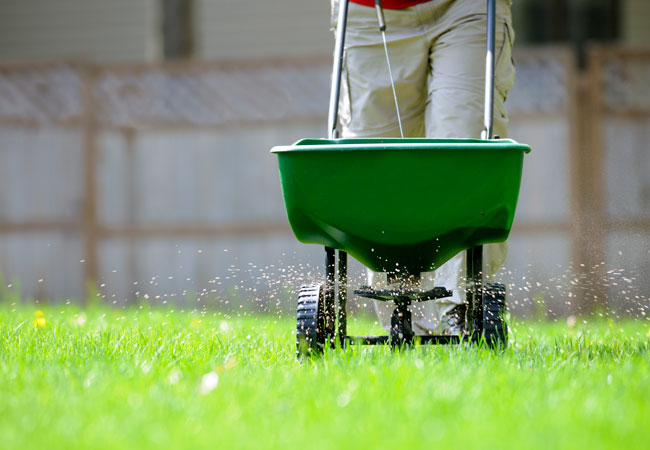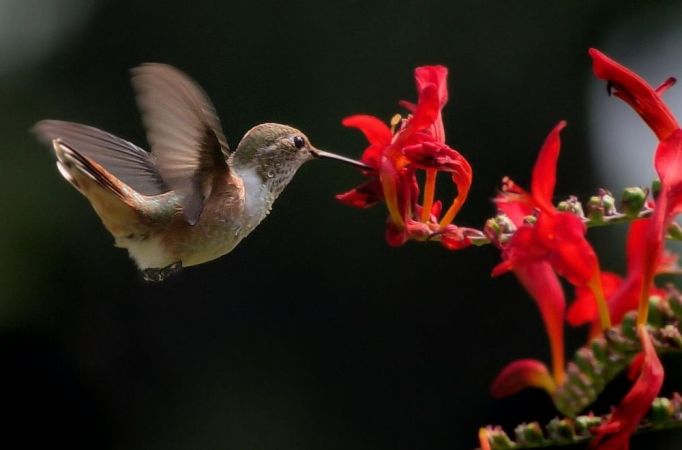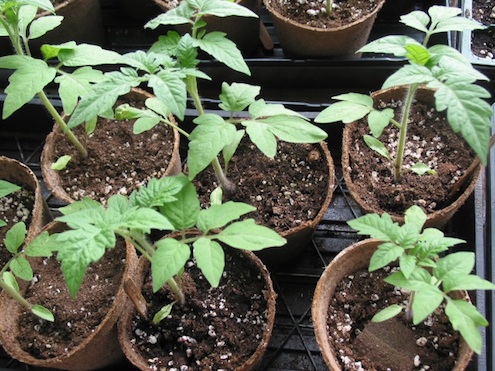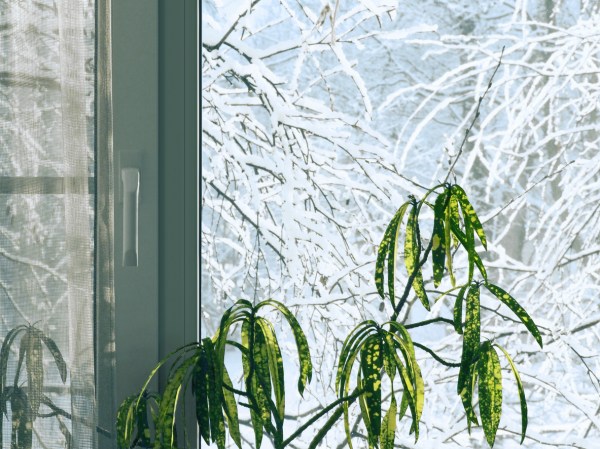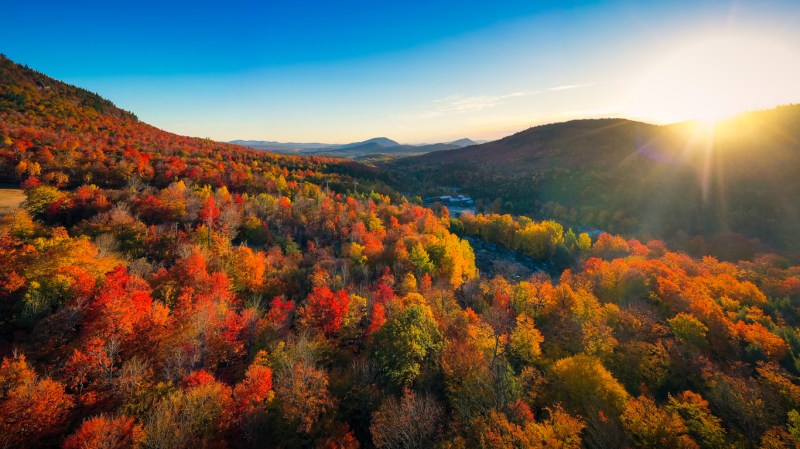We may earn revenue from the products available on this page and participate in affiliate programs. Learn More ›
Succulents are all the rage with low-care houseplant advocates. While it’s true that cacti and their allies survive long stretches without water, “easy to grow” means different things to different gardeners. If you love to water plants, or if your home offers limited access to natural sunlight, these plants might not be right for you. But if you have a room with bright light and tend toward a somewhat hands-off gardening approach, then cacti and succulents like kalanchoes could be a great choice.
Kalanchoe blossfeldiana, also known as Flaming Katy or simply Kalanchoe, comes from Madagascar. In the wild, it grows to about 1.5 feet tall and wide. Florists and houseplant lovers appreciate its colorful, long-lasting flowers, compact growth habit, and minimal care requirements. A kalanchoe plant makes an excellent potted plant for bright windowsills and sun rooms, and it also works well as a seasonal indoor-outdoor patio plant. Read on to learn more about this fun little plant.
Kalanchoe Plant Care at a Glance
Common Name: Kalanchoe, Flowering Kalanchoe, Florist Kalanchoe, Flaming Katy
Scientific Name: Kalanchoe blossfeldiana
Soil: well-draining soil
Light: bright sunlight
Water: low water
Food: general purpose houseplant food
Temperature and Humidity: 60 and 85 degrees Fahrenheit, moderate to high humidity
Propagation: stem cuttings, leaf cuttings
Safety: allergy-friendly but contains toxins
Kalanchoe Plant Characteristics
If you love flowering houseplants, you might be interested in a kalanchoe succulent. It is one of the most versatile and reliable flowering house plants in terms of both reblooming and ease of care. Kalanchoes are adored by houseplant enthusiasts and florists alike for their attractive glossy foliage and extended floral displays. The plant is a fantastic, lasting gift, since the foliage remains beautiful even after the flowers fade, and the plant will live and rebloom for years.
Kalanchoes grow best in full sun or bright, indirect sunlight, and well-draining soil. The succulent, dark green, scallop-edged leaves make a fine backdrop for large clusters of bright pink, red, or yellow flowers. The long-lasting blooms remain at peak condition for weeks at a time. The plants typically mature at 8 to 12 inches tall and wide.
The bloom cycle of this kalanchoe species is day-length dependent. Bud set is stimulated by a 6-week season of 14-hour nights. Then, within 4 months, flowering begins. In its natural habitat, this happens around the transition from winter to spring. Once started, the bloom cycle lasts for several weeks or even months.
Types of Kalanchoe
- Kerinci Kalanchoe: Kerinci is a beautiful dark green succulent with pink flowers.
- Lanin Kalanchoe: Lanin kalanchoe produces dark green foliage and bright orange blooms.
- Queen Jodie Kalanchoe: Queen Jodie is easily recognized by its rose-like, salmon pink double blooms.
- Queen Lindsay Kalanchoe: Queen Lindsay is a double bloom kalanchoe plant with yellow flowers.
- Simone Kalanchoe: Simone’s pure white flowers really pop against the deep green foliage.
Selecting Soil for Kalanchoe Plants
Kalanchoe plants need a well-draining potting mix. Choose a prepackaged cactus and succulent potting mix, or mix up your own. Blend three parts peat moss with two parts perlite for a beneficial balance of moisture retention and excellent drainage.
Stored potting soil can become extremely dry with extended storage. To avoid problems, be sure that your kalanchoe potting mix is well hydrated. If it is extremely dry, soak it several hours if necessary, and let the excess water drain away thoroughly before planting.
Related: The Best Planters for Succulents
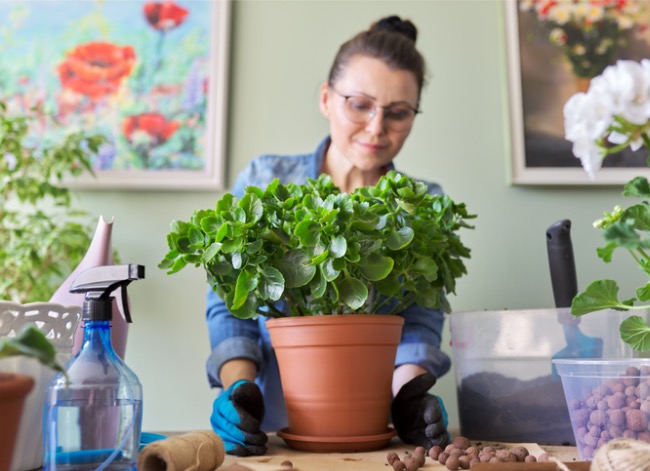
The Right Light
Kalanchoes need lots of light to grow strong and healthy, and to rebloom. In the wild, kalanchoes grow in full sunlight. Nursery plants are conditioned to grow best in bright indoor light. Choose a location near a bright east-, south-, or west-facing window for best results.
Symptoms of inadequate light exposure include elongated stems, unbalanced growth, pale or misshapen foliage, leaf drop, and no flowers. If the natural light exposure is not enough, either move the plant to a brighter location or add a bright lamp for supplemental light.
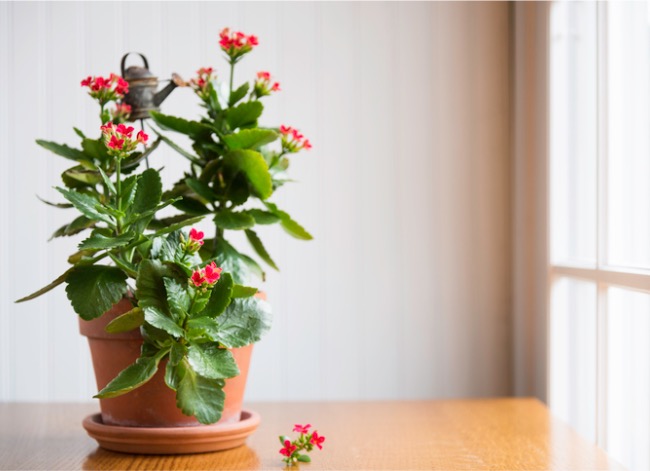
Watering Kalanchoe Plants
Kalanchoes thrive in soil that drains well and dries out somewhat between waterings. Check to see if your plant needs water by sticking your finger into the soil. If the surface is moist, do not water. If the surface is dry but the soil just below the surface is moist, do not water. When the top 1 to 1.5 inch layer of soil has dried out, it is time to water.
Watering frequency will depend on the temperature and humidity of the room, soil condition, plant and pot size, and other factors. The plant might last anywhere from 1 to 3 weeks between waterings, and it can change over time.
To water a kalanchoe, move it to a sink or other location where overflow will not cause a problem. If the soil mix is fine to medium textured, it should absorb water easily. Water deeply with a watering can. If the soil texture is coarse and it has become very dry, it will be necessary to submerge the pot in water to rehydrate the coarse material.
Allow the potting mix several minutes to soak up water, then let it drain thoroughly. Do not allow overflow water to stand in a saucer beneath the plant.
Related: 10 Houseplants You Can Propagate the Fastest for an Ever-Expanding Indoor Garden
Fertilizing Kalanchoe Plants
Kalanchoes are not “picky eaters,” but they benefit from consistent fertilization. Ready-made potting soil includes a small amount of fertilizer, but within a month of repotting, those nutrients will have been used up. Choose either a slow-release fertilizer or liquid fertilizer that contains approximately equal amounts of the three main nutrients: nitrogen (N), phosphorus (P), and potassium (K).
For year-round plant health, a general purpose houseplant fertilizer labeled 20-20-20 should suffice. During the spring through fall growing season, kalanchoes benefit from additional nitrogen and potassium, so something like a 20-8-20 formula would be better.
Setting the Temperature and Humidity
Very hot or very cool temperatures cause kalanchoes to stop flowering. An ideal temperature range is between 60 and 85 degrees Fahrenheit, or average indoor air temperatures. If you move your plant outdoors during summer, provide some afternoon shade to avoid the most intense heat of the day. Be sure to move your kalanchoes back indoors ahead of frosty weather. Temperatures lower than 40 degrees Fahrenheit could damage or kill the plant.
Moderate to high humidity of between 75 and 85 percent is good for these plants. Avoid “swampy” conditions. Prolonged excessive humidity above 90 percent can lead to problems such as leaf spot, leaf drop, or damage to flowering structures.
Propagating Kalanchoe Plants
Like other succulents, kalanchoe plants grow easily from leaf cuttings and stem cuttings. Always select robust, healthy tissue for propagation.
For leaf cuttings, choose plump, firm leaves. Carefully pluck or cut the entire leaf from the plant with its leaf stem. For stem cuttings, choose healthy mature stems and take cuttings at least 3 inches long. Place leaves or cuttings in a warm, dry location with good air circulation for 3 days. Once they have dried and the cut ends have scabbed over, plant them into a pre-moistened succulent potting mix.
Place potted cuttings in a warm, bright location, in indirect sunlight. They should be ready to transplant into their own pots in 4 to 6 weeks.
Related: The Best Indoor Succulents For Fuss-Free Greenery
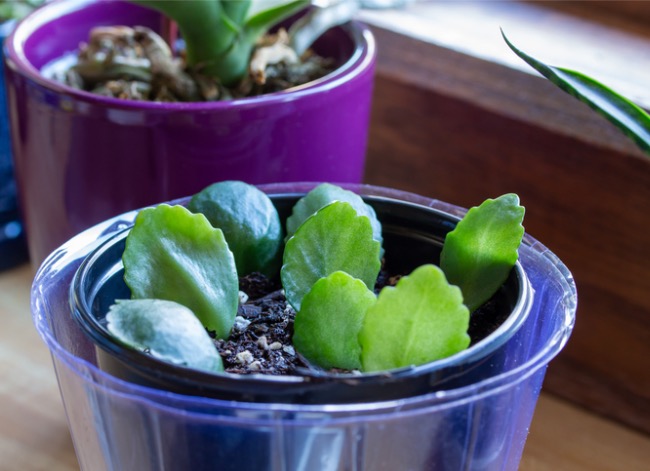
Safety Considerations
These succulents offer a mixed bag as far as safety is concerned. Kalanchoes make an excellent low-allergen choice for allergy sufferers. On the other hand, they contain compounds that can be deadly to cats, dogs, and birds. As with all houseplants, growers should beware and be cautious. Keep kalanchoes away from young children and pets that might be at risk of accidental ingestion.
Potential Pests and Diseases
Another outstanding attribute of kalanchoe plants is their resistance to pests and diseases. Although they have no major enemies, weak or stressed plants may be susceptible to stem rot disease, mealybugs, mites, or scale insect infestations. These problems are mostly eliminated by providing proper light and watering conditions, and by quarantining any nearby plants that become infested.
FAQ About Kalanchoe Plant Care
Have a question not answered above? Read on to find out more about growing kalanchoe plants.
Q. Is a kalanchoe plant indoor or outdoor?
A kalanchoe makes an excellent indoor plant for a bright location, such as a south-facing window or sunroom. It can also lodge outdoors on a patio during summer, but bring it in before nighttime temps go down to about 40 degrees.
Q. How do you care for a kalanchoe plant indoors?
Kalanchoes are easy-to-grow succulents that thrive on low water and bright light. Water when the soil becomes dry to a depth of 1.5 inches, and feed during the growing season.
Q. How do I get my kalanchoe to bloom again?
Six weeks of 14-hour nights are required to stimulate flower bud production. Then blooming begins within 4 months. This naturally occurs in spring and fall in temperate regions. Remove faded flowers after the first bloom period to reserve energy.
Q. Do kalanchoe plants need sun?
Kalanchoes need bright direct or indirect sunlight. Inadequate light leads to growth and flowering problems.
Looking for more easy-care succulents to grow as houseplants? Check out our guides on caring for aloe veras, jade plants, and snake plants.

